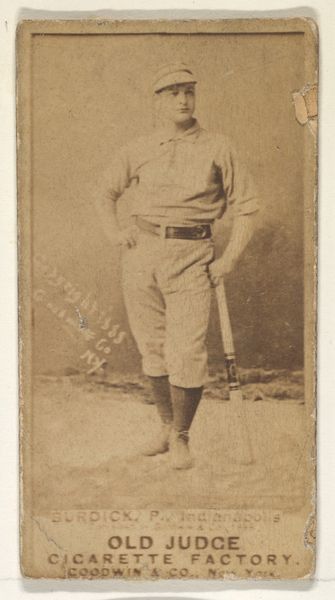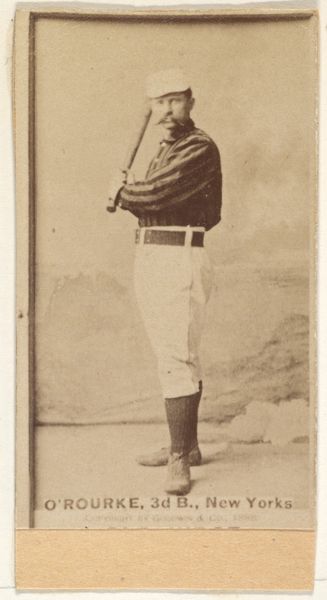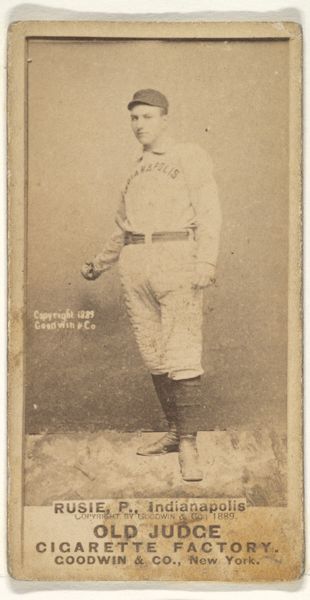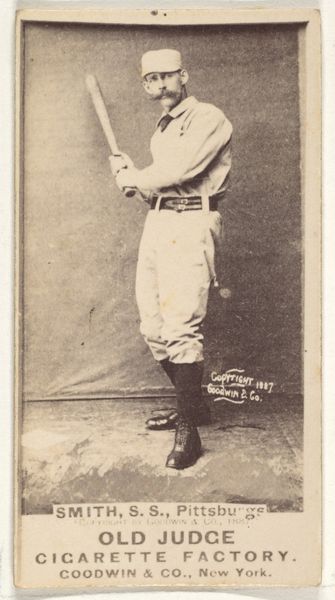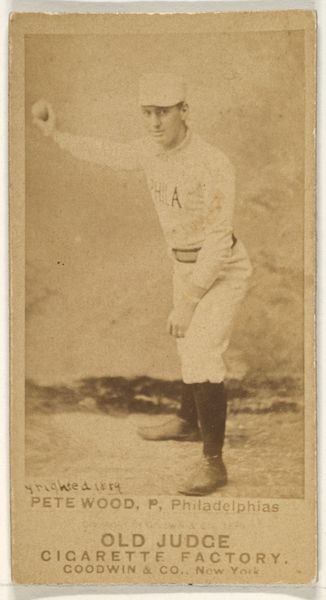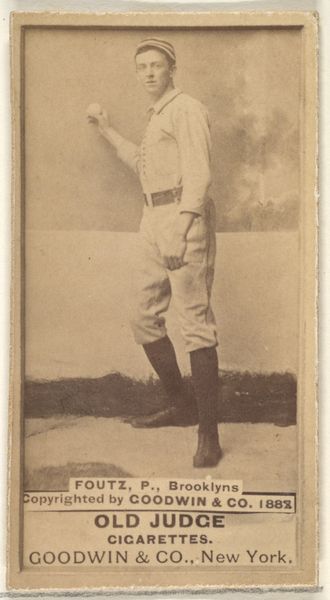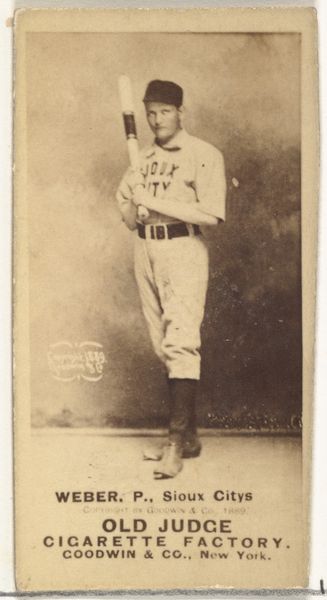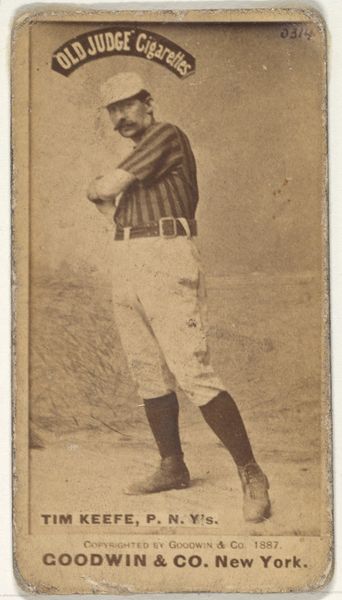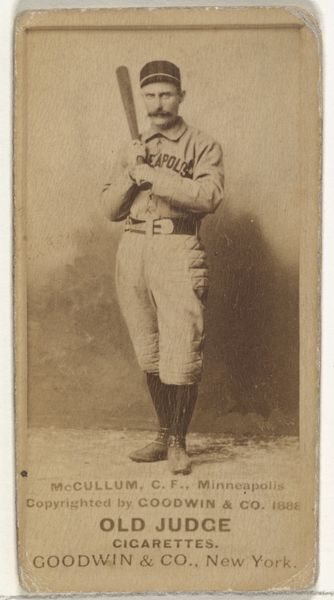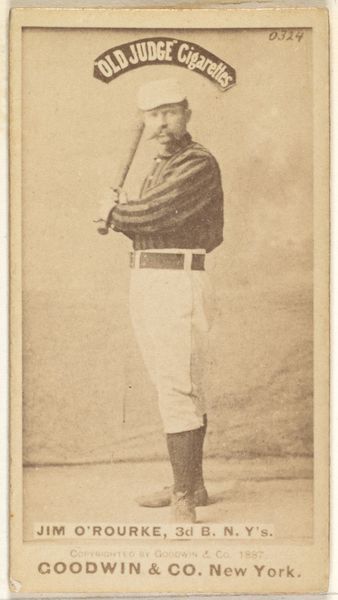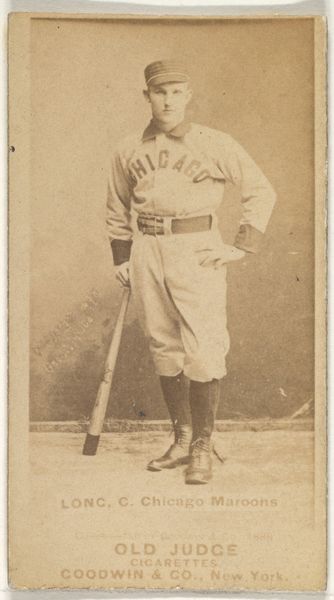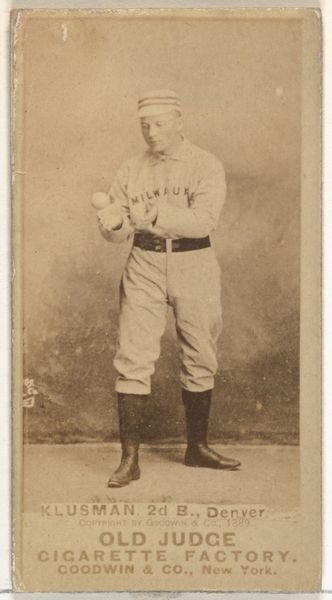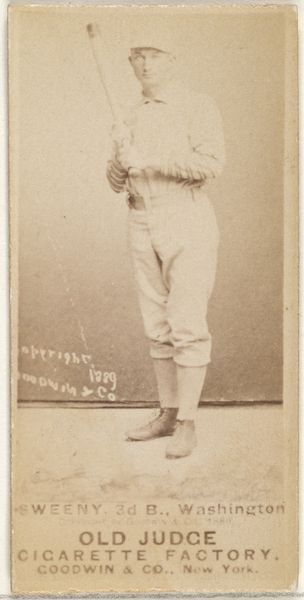
Thomas Joseph "Tom" Lovett, Pitcher, Omaha Omahogs/ Lambs, from the Old Judge series (N172) for Old Judge Cigarettes 1888
0:00
0:00
drawing, print, photography
#
portrait
#
drawing
# print
#
baseball
#
photography
#
19th century
#
men
#
genre-painting
#
athlete
Dimensions: sheet: 2 11/16 x 1 3/8 in. (6.9 x 3.5 cm)
Copyright: Public Domain
Editor: Here we have "Thomas Joseph 'Tom' Lovett, Pitcher, Omaha Omahogs/ Lambs, from the Old Judge series (N172) for Old Judge Cigarettes," created in 1888. It looks like a photographic print, sepia-toned, showing a baseball player in uniform. The subject's stance and the monochromatic palette give the image a certain sense of nostalgia. What jumps out at you when you look at this, focusing on its inherent form? Curator: I am drawn to the geometry within the frame. The subject's body forms a series of near-parallel lines, echoed by the bat. This creates a static quality that contrasts with the implied action of a baseball game. Notice how the composition centres the figure, almost bisecting the space, yet it also includes text as part of the overall arrangement. How does this merging of text and image affect your understanding? Editor: That’s interesting. I hadn't considered the text as an integral design element, but I see how it adds a layer to the composition, balancing the figure and creating a structured verticality. It definitely emphasizes its function as advertisement, while at the same time immortalizing Lovett in the picture. Curator: Precisely. The rigid typography and formal pose point toward a specific semiotic code used to communicate information within the design space of commercial imagery, it is very fascinating to witness its influence. We might consider how these various stylistic choices contribute towards specific understanding around that time. Editor: Right, focusing on the interplay between form and function, it really showcases a marriage between sport, commerce, and early photographic techniques, even beyond it being a historical artifact. Curator: Indeed, looking beyond the subject and towards the inherent form enriches the work by offering multiple viewpoints on its artistic construction. Editor: Definitely, analyzing the image's structure opens up completely new understandings of what the artwork really is and says.
Comments
No comments
Be the first to comment and join the conversation on the ultimate creative platform.
